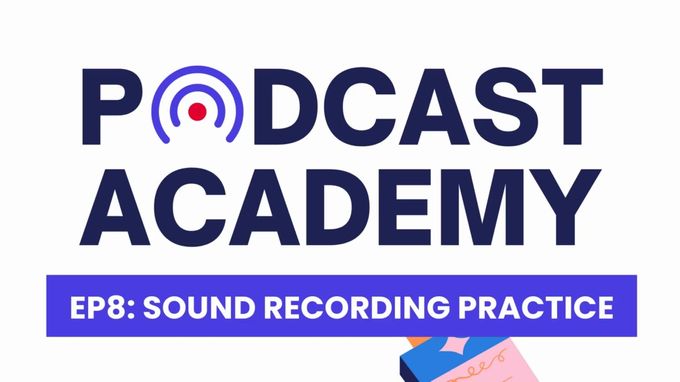
8 - SOUND RECORDING PRACTICE

Chapters





















Description
(00:00) THE IMPORTANCE OF THE ROOM In this episode, I am going to talk about the sound recording practice. To get people to listen to your podcast, you would need the right sound. I am not telling you to invest in expensive equipment, as you can find reasonably priced microphones that will do the job. Firstly, you have to pay attention to your surroundings. For the right sound, you have to use your voice properly. You can find more tips in the episode facing the microphone. And above all, you must also pay attention to the acoustics of the room you are in. It's not that you can't record a podcast anywhere. It is more about that we cannot pick up sound anyhow. You don't sit next to a radiator that makes noise or a fridge that hums. We choose a room without any disturbing sound elements. But that's not enough. You also have to be wary of the room's reverberation. (00:50) AVOIDING REVERBERATION The microphone tends to capture the atmosphere of the room you are in. You shouldn't mute the sound, but you should still silence the echo as much as possible because it's quite unpleasant. The reverberation of a room can give the impression of distance. And when you record a podcast, you just want the opposite: you want proximity. Be aware that when sounds bounce off hard surfaces, they tend to resonate. You should therefore avoid recording in a room with high ceilings, little furniture, concrete, and large windows. We say yes to furniture that absorbs sound just by being there, to soft carpets on the floor, and to curtains that are closed if necessary. (01:28) REGISTRATION BY CARDS For the technique itself, once you are connected to the Lilicast platform, you should absolutely record by cards rather than recording everything at once. The advantage of cards is that you can validate part of your recording before moving on to the next one. You are less likely to miss since you split up the recording. And if you do miss, you don't have to start all over again! (01:50) WHAT MICROPHONE You can't talk about sound recording without talking about the equipment you're going to need. This is discussed in more detail in the episode about the material needed for a successful podcast. But you should already know that you can record a podcast with the microphone of your phone or your headset. I will say it again and again, the place where you make the recording is far more important than the microphone. The only microphone to forget, in the end, is the one on your computer, which does not have the qualities required to do the job. If you want to invest, you will have to choose between a USB or XLR microphone, and a dynamic or condenser microphone. For many, other questions will eventually be asked: Will you prefer an external recorder with an SD card, a sound card with XLR microphones or will you decide to record with Lilicast at home, with a smartphone? We'll talk more about it in the podcast academy episode about hardware. (02:45) HEADPHONES Another tip: Capture sound with headphones on your ears, so that you can hear the sound live. You will be able to adjust the sound and correct what needs to be corrected live. Because there's nothing more annoying than recording everything, thinking you're done and then realizing at the end that the sound wasn't great and you have to start all over again. (03:05) BASIC SETTINGS Before I tell you about the basic settings that you will have to make, you should know that Lilicast is here to make your task easier. In fact, Lilicast allows you to adjust the level of the various sound recordings that you have validated. You, therefore, record your sound by card, and the final processing of our program will adjust everything, leveling what needs to be leveled, for a coherent sound result. As I was saying: you are still responsible for some basic settings. Adjust your microphone in particular to avoid sound saturation. Because if the sound gets saturated, it will be difficult, if not impossible, to catch up. If you are using a recorder with a built-in microphone, pay close attention to the noises your hands make when they shake. If a bracelet touches a table where the microphone is placed, you can hear it. A microphone on a raised stand helps to avoid some unwanted noise. By the way, during the recording of your podcast, you are going to me do the honors by taking off your flashy jewelry and avoiding certain fabrics that when rubbed, can be noisy and irritating for the eardrums. Finally, to avoid distractions, turn off your mobile phone or put it in airplane mode. This will avoid any sound interference. And any interference at all, in short.




